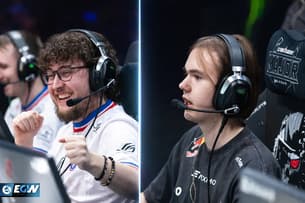
How Esports Broadcasting Is Shaping the Future of Digital Entertainment

Esports broadcasting has quickly become one of the most exciting types of digital media. With pro casters, dramatic replays, and live crowd energy, it offers a viewing experience that rivals traditional sports. Fans don’t just watch the games, they follow the drama of each match, the journey through tournaments, and connect through live chats, all streamed across multiple platforms.
This rise is fueled by interactivity. Features like overlays, live polls, and real-time stats keep fans engaged. Broadcasters are also exploring new tech like VR arenas and AR graphics to make viewers feel part of the action. These changes are shaping the future of digital entertainment.
How Games Are Presented Like Live Sports
Esports broadcasting has refined the art of presenting games like League of Legends or Counter-Strike as spectacles. High production quality, complete with dynamic camera angles, theme music, and hype packages, emulates traditional sports while establishing its own identity. Matches are shot from multiple perspectives, including player POVs and strategic wide shots that immerse audiences in every play and misplay.
Furthermore, studio segments with analysts and pro-player commentators deepen the experience. Their breakdowns offer strategic insights, predictions, and live analysis that educate and excite fans simultaneously. This professional presentation elevates esports from simple entertainment to a shared cultural event, one that fans anticipate and engage with fervently.
The Esports Effect on Other Interactive Media
The rise of esports broadcasting has not only reshaped how audiences consume competitive gaming but has also influenced other areas of interactive entertainment. As more people turn to digital experiences for both competition and connection, other platforms are borrowing from esports to enhance how they engage users. These platforms are adopting features like real-time performance tracking, skill-based challenges, and social interaction to create a more dynamic and competitive environment.
A notable example is the emergence of online platforms that offer a wide selection of casino games that incorporate esports-style mechanics, such as FPS-inspired challenges, puzzle-based competitions, and PvP formats.
Some even feature esports-themed slots designed with MOBA aesthetics and real-time leaderboard systems, reflecting the growing convergence between casino gaming and esports culture.
Another space seeing this influence is interactive fitness apps that gamify physical activity. These platforms use competitive formats, live leaderboards, and real-time feedback, much like esports broadcasts, to keep users engaged and motivated. Whether it's cycling against virtual opponents or completing timed challenges, the competitive spirit and immersive presentation mirror what fans experience in esports tournaments.
This crossover demonstrates that the hallmarks of esports, direct competition, skill-based mechanics, real-time interactivity, and thematic presentation, are finding fertile ground in other digital arenas. Online platforms are borrowing the rhythms and structures of esports to create more dynamic, challenging, and socially rich experiences, marrying the thrill of competitive play with the design sensibilities of broadcast tournaments.
Interactivity Takes Center Stage
Digitization means spectators are no longer restricted to passive viewing. Real-time chatrooms, interactive overlays, and predictive "who wins next round?" polls foster community participation. These features create a feedback loop, encouraging engagement that can dictate broadcast flow or influence tournament formats. In a sense, esports broadcasts bend to the audience, not the other way around.
Some broadcasters are testing even deeper engagement layers, including VR spectator modes that give viewers in-arena visuals, and second-screen apps offering stat breakdowns and fan commentary. These innovations echo the immersive quality of live events, yet they’re accessible anywhere, anytime, and they’re pushing the boundaries of what digital entertainment can offer.
How Esports Is Changing Digital Entertainment
Esports broadcasting isn’t an isolated trend, it’s a catalyst for innovation across the entertainment industry. Its influence extends to video-on-demand services, virtual concerts, and other immersive experiences. Platforms that once focused on passive viewing are now experimenting with ways to incorporate live chat, audience goals, and content unlocked through viewer interaction.
Advertisers and sponsors are responding too. Brands are investing in integrated experiences that mimic broadcast mechanics, dynamic overlays, in-stream activations, and live-hosted segments. A strong example is Louis Vuitton’s collaboration with League of Legends, where the brand not only created in-game character skins and digital fashion but also integrated content into live tournament broadcasts with stylish overlays and custom segments, blending luxury branding with competitive gaming.
Even traditional entertainment verticals such as music festivals and virtual conferences are adopting esports-inspired production values and community-driven participation.
Why Esports Broadcasting Leads the Way
Esports broadcasting has redefined what it means to “watch” digital content. By fusing cinematic production with real-time interaction, it's set a new standard for engagement. Its influence on formats like skill-based online platforms and themed experiences marks a shift toward more immersive, competitive, and community-driven entertainment. As technology and creativity converge, the blueprint set by esports will shape the future of viewing, one broadcast at a time.

Kateryna Prykhodko es una autora creativa y colaboradora de confianza en EGamersWorld, conocida por sus atractivos contenidos y su atención al detalle. Combina la narración de historias con una comunicación clara y reflexiva, desempeñando un papel importante tanto en el trabajo editorial de la plataforma como en las interacciones entre bastidores.
 StarLadder Budapest Major 2025: Análisis completo del torneoUn resumen completo de la StarLadder Budapest Major 2025: momentos clave, grandes sorpresas, drama de los playoffs y la victoria de Vitality en el campeonato después de tres semanas de CS2.
StarLadder Budapest Major 2025: Análisis completo del torneoUn resumen completo de la StarLadder Budapest Major 2025: momentos clave, grandes sorpresas, drama de los playoffs y la victoria de Vitality en el campeonato después de tres semanas de CS2. Guía del druida de Path of Exile 2 - Desglose de la estructura de nivelación de ShapeshiftGuía completa de construcción del Druida metamorfo de PoE 2 con Volcán, Furia de la Montaña y Chamán Ascendente. Equipamiento fácil, defensas fuertes y progresión fluida en la campaña.
Guía del druida de Path of Exile 2 - Desglose de la estructura de nivelación de ShapeshiftGuía completa de construcción del Druida metamorfo de PoE 2 con Volcán, Furia de la Montaña y Chamán Ascendente. Equipamiento fácil, defensas fuertes y progresión fluida en la campaña. Confirmado el mejor jugador de CS2 - Donk se queda atrásDos superestrellas, un trono. Un análisis en profundidad de la rivalidad entre ZywOo y Donk en la CS2 de 2025, con estadísticas, impacto y las razones por las que ZywOo es el favorito para el número 1.
Confirmado el mejor jugador de CS2 - Donk se queda atrásDos superestrellas, un trono. Un análisis en profundidad de la rivalidad entre ZywOo y Donk en la CS2 de 2025, con estadísticas, impacto y las razones por las que ZywOo es el favorito para el número 1. Evento mediático de ZOWIE en StarLadder Budapest Major 2025: Experiencia EGamersWorldDel 24 de noviembre al 14 de diciembre se celebró en Budapest el StarLadder Budapest Major 2025, el último torneo de la temporada 2025.
Evento mediático de ZOWIE en StarLadder Budapest Major 2025: Experiencia EGamersWorldDel 24 de noviembre al 14 de diciembre se celebró en Budapest el StarLadder Budapest Major 2025, el último torneo de la temporada 2025.


